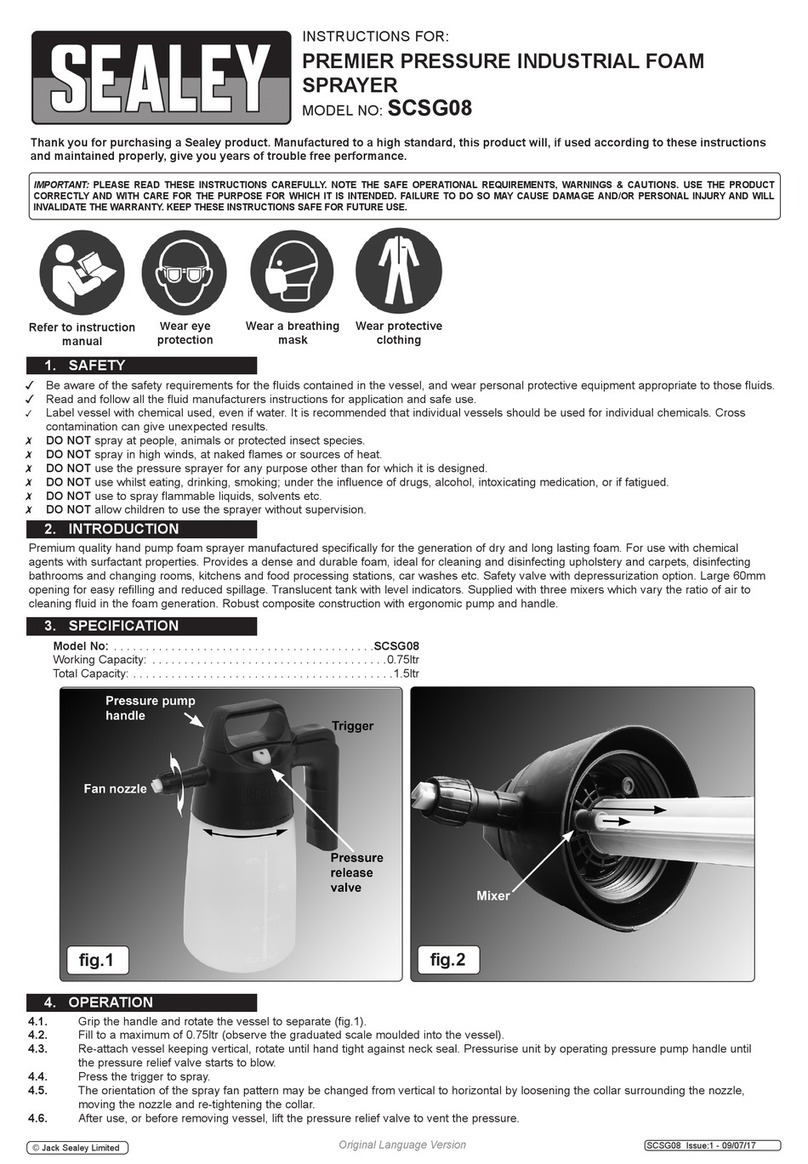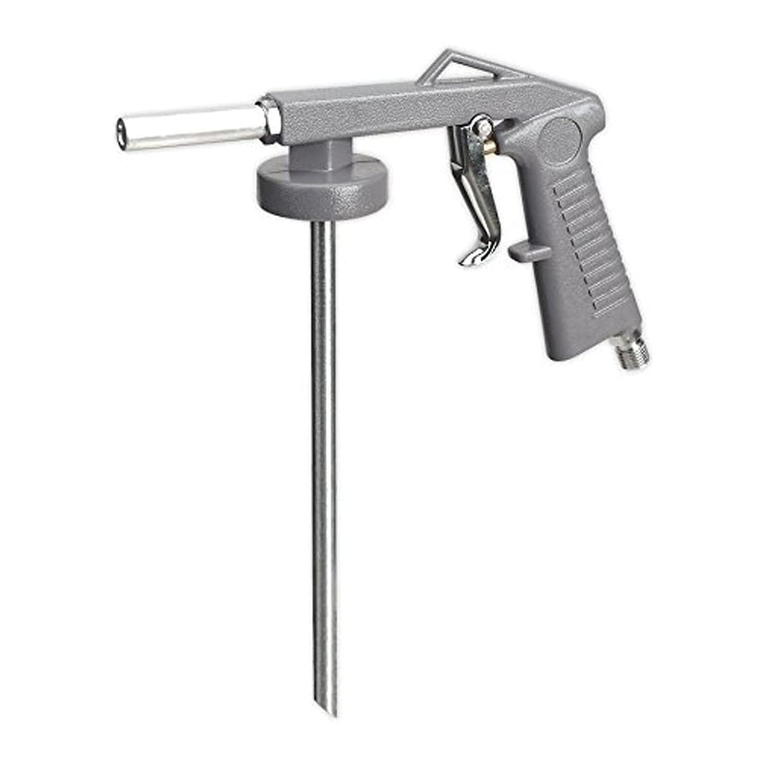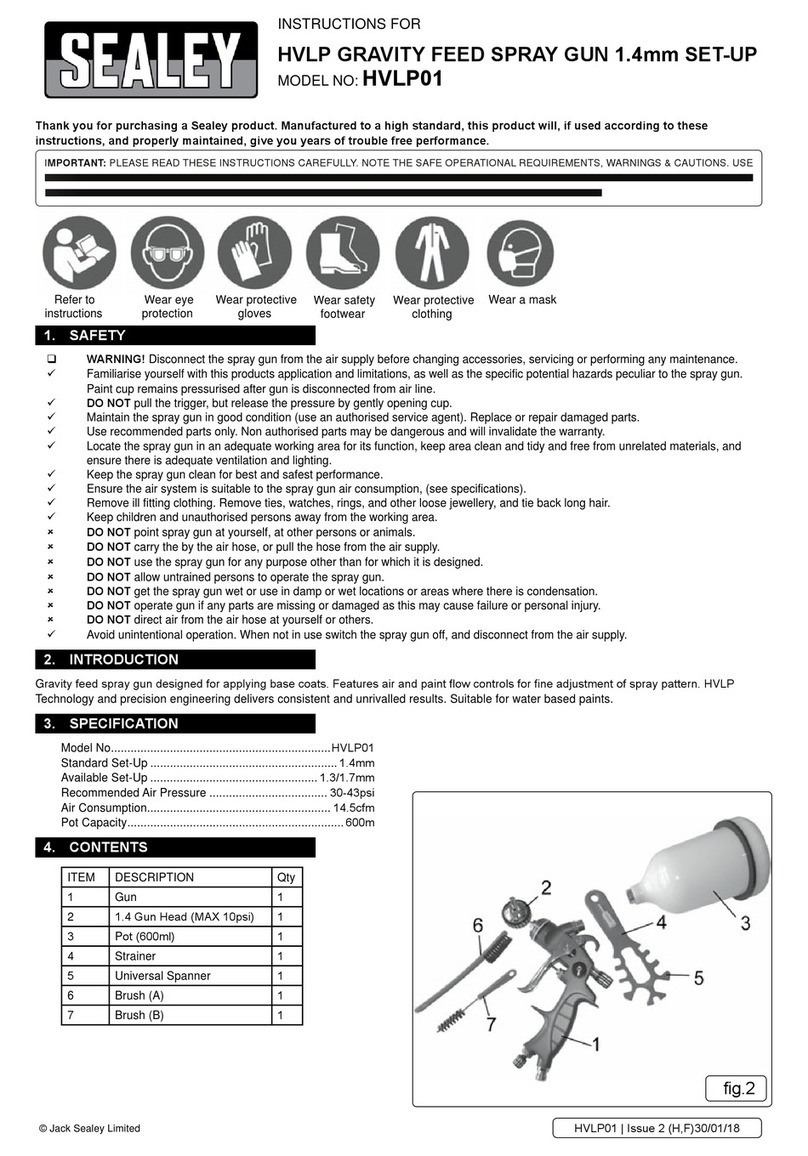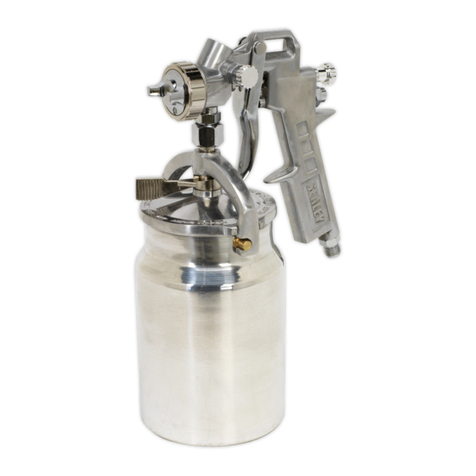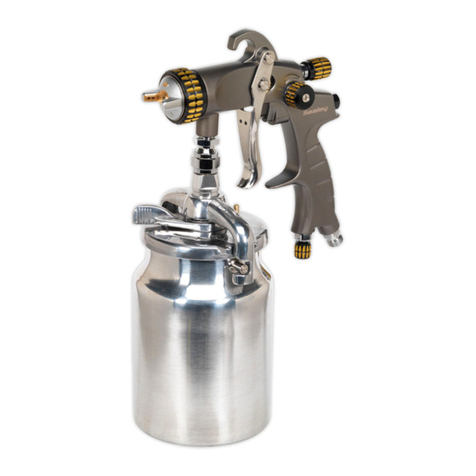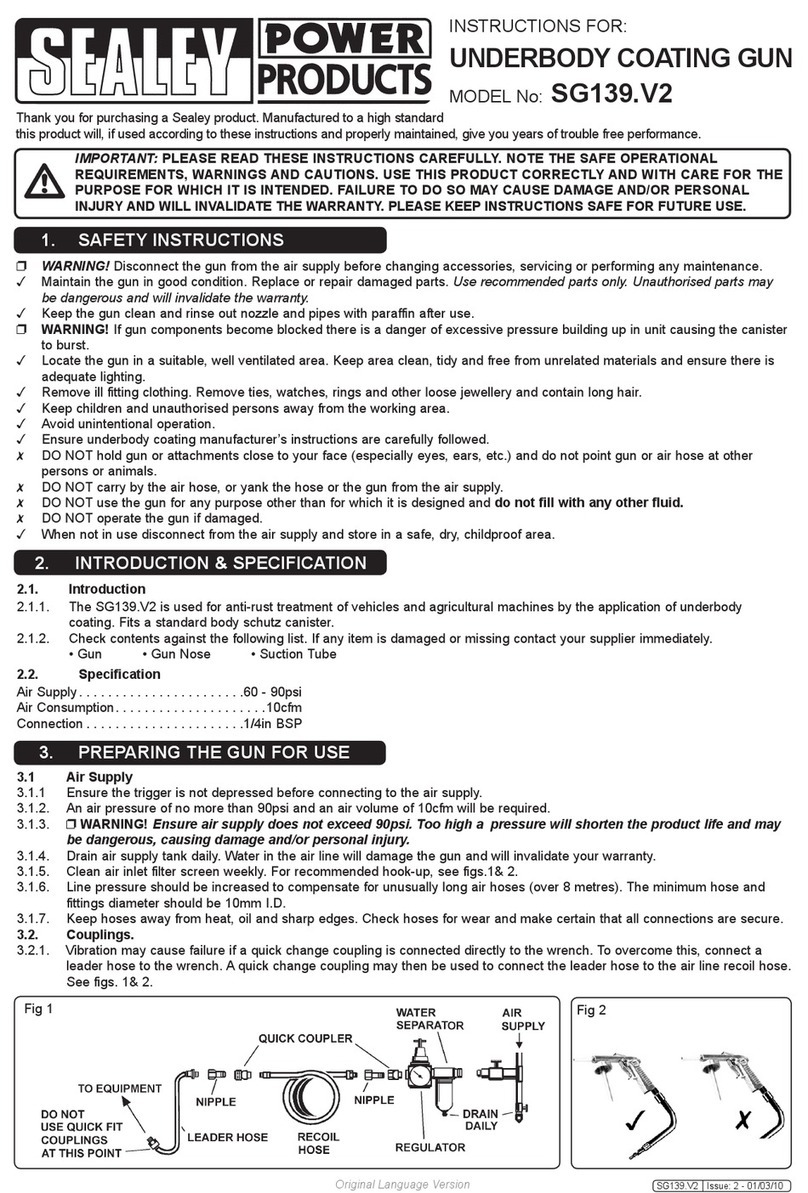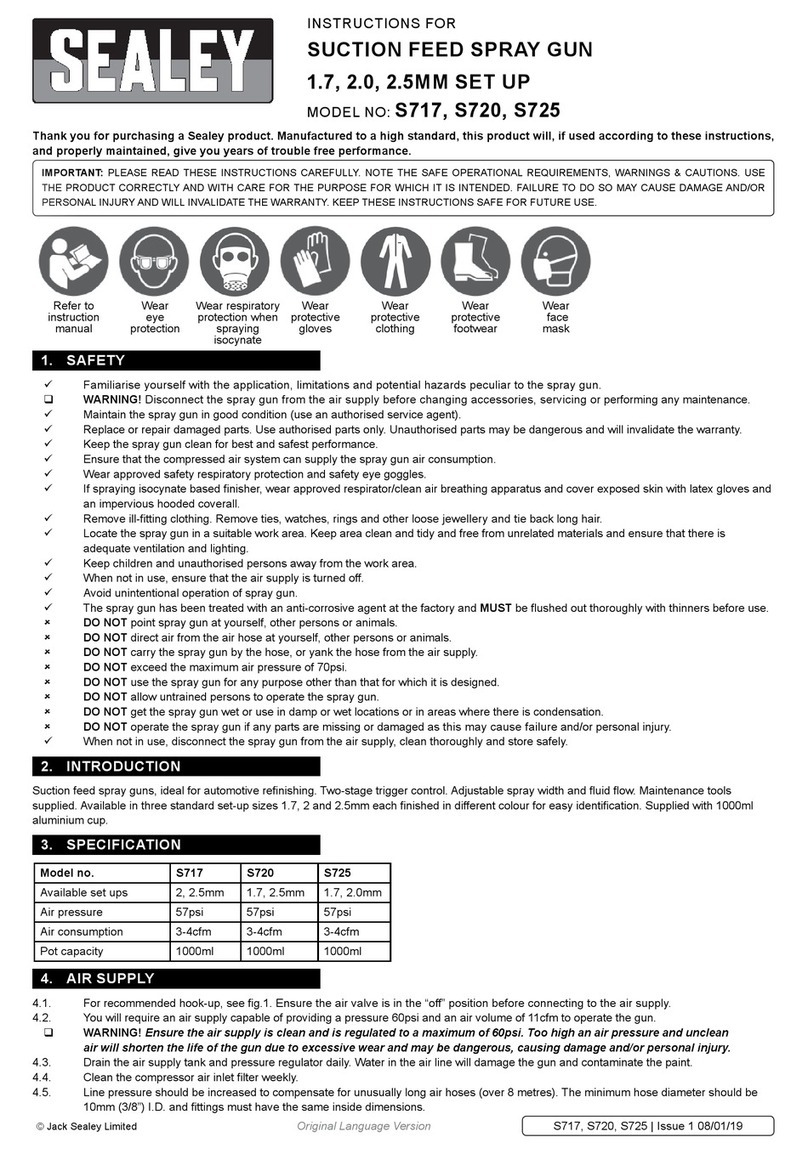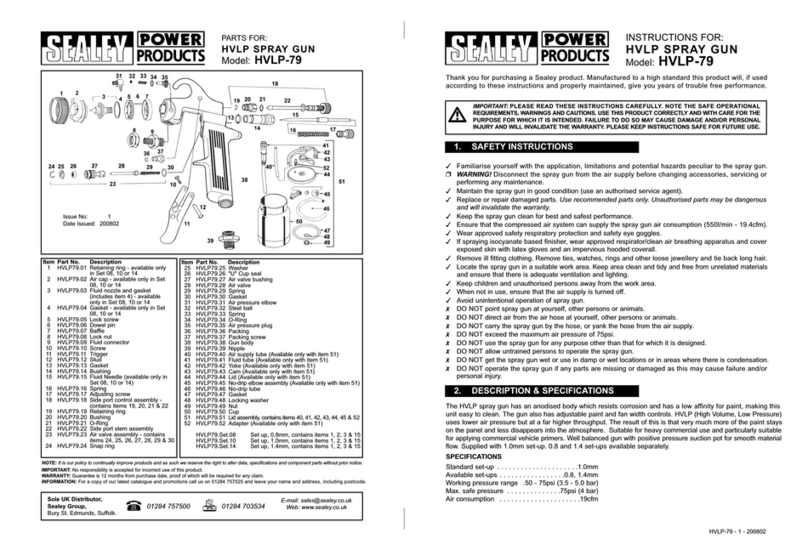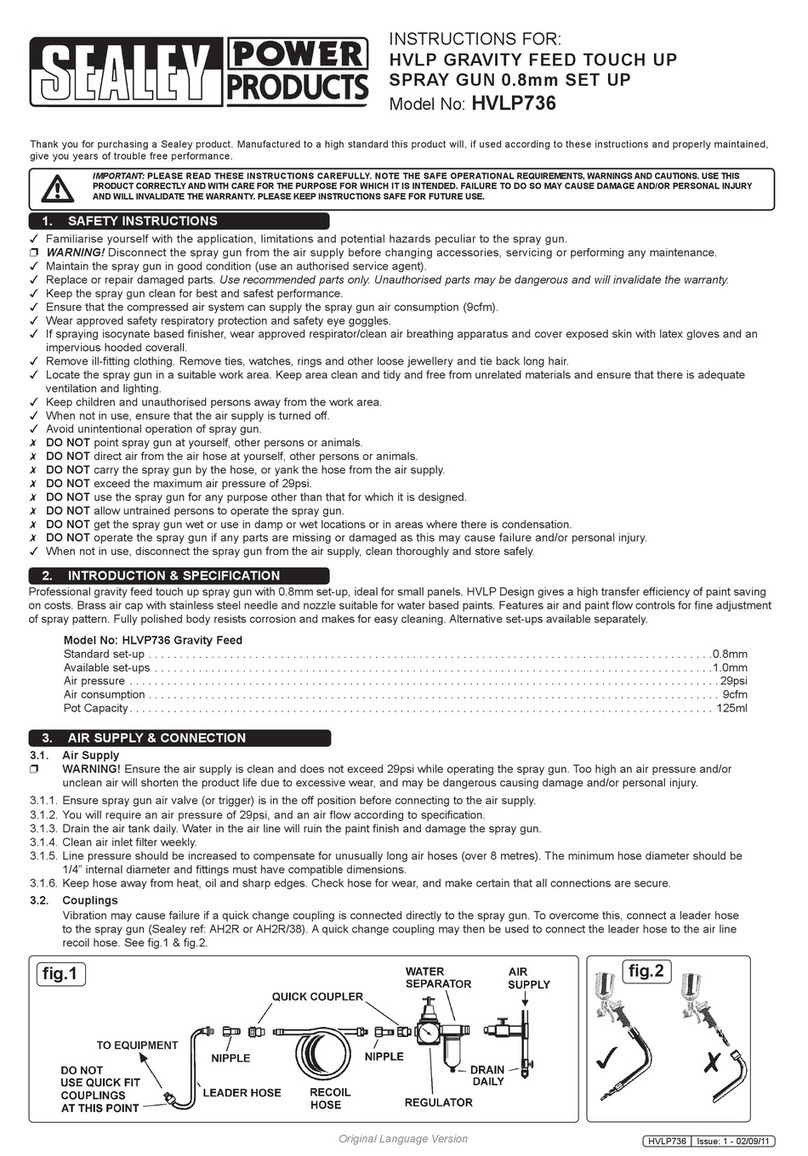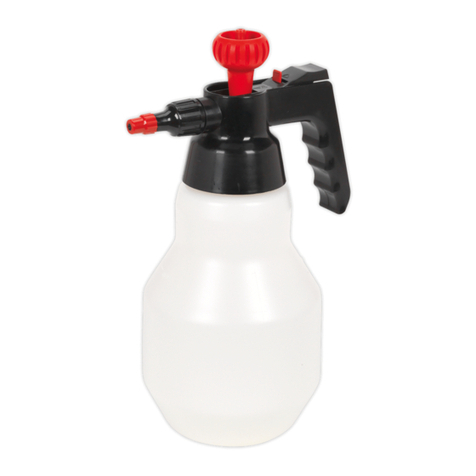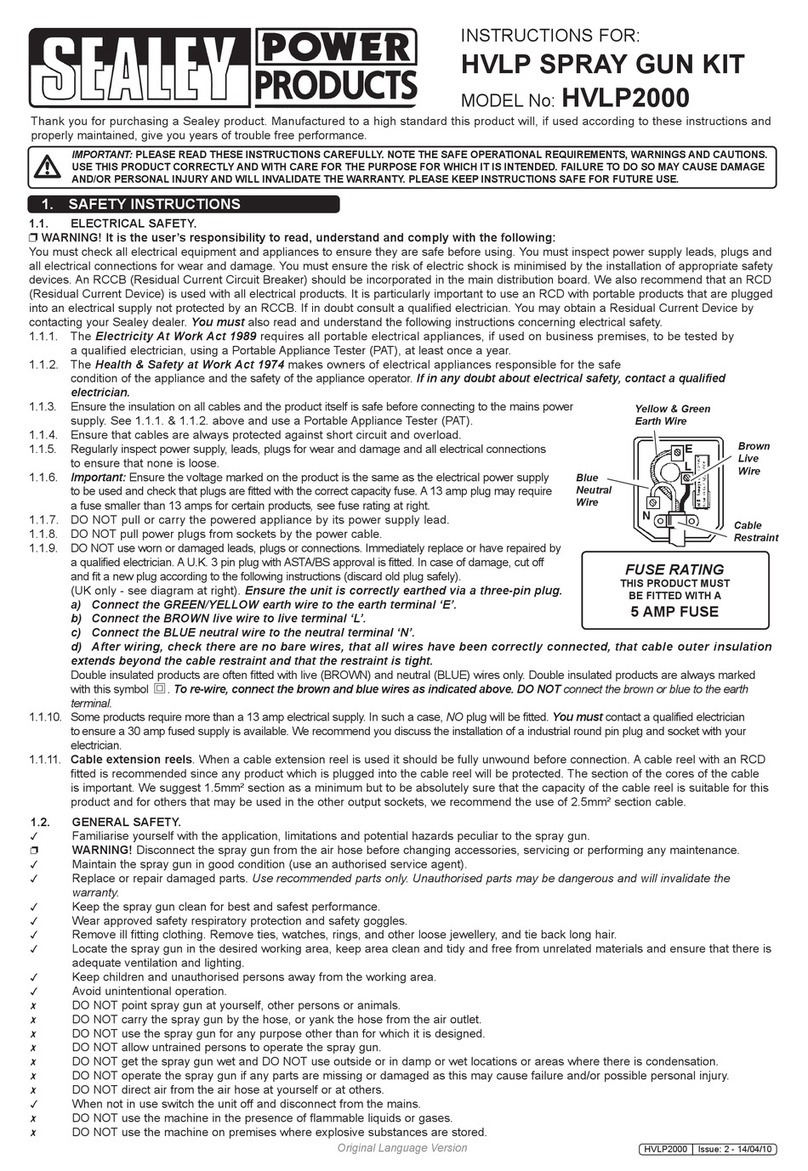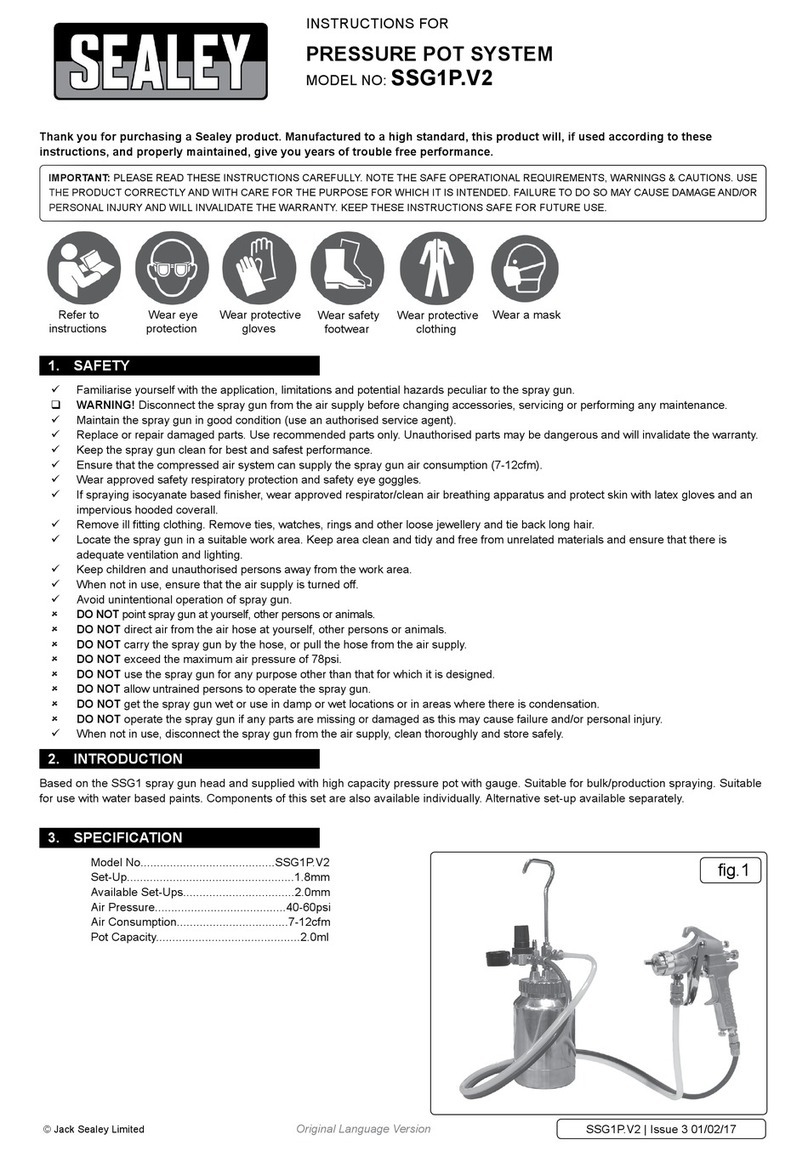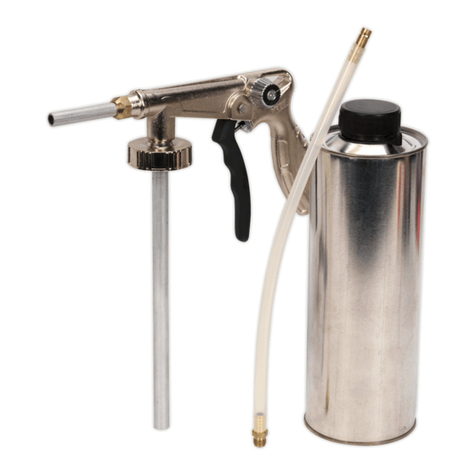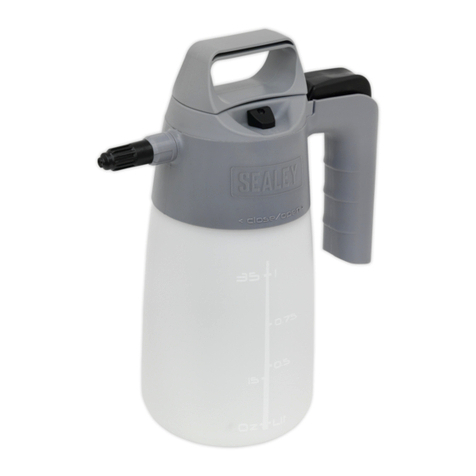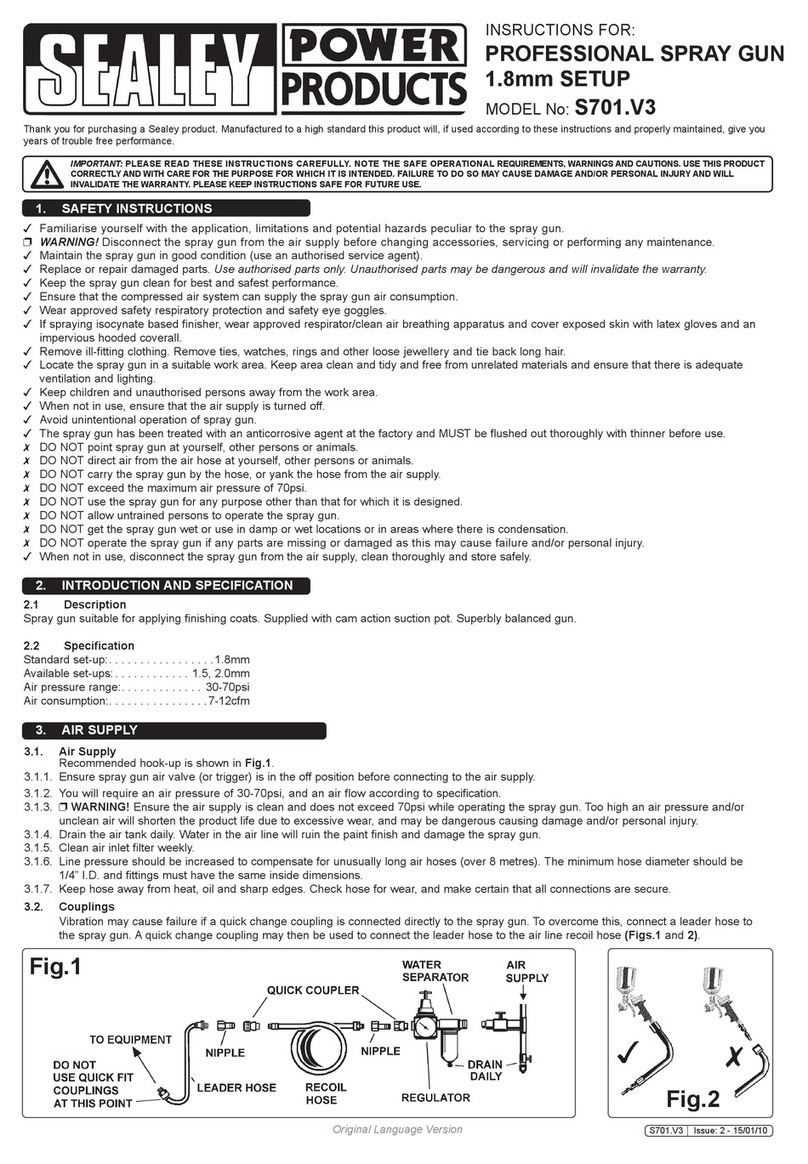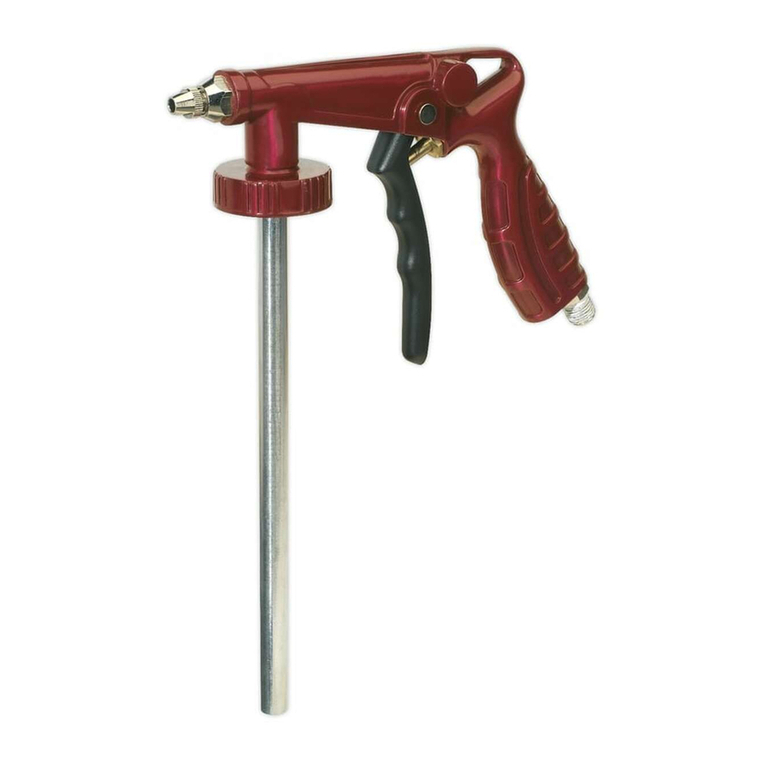
Ideal for applying base coats. Features adjustable paint flow and fan width controls. Supplied with
composite gravity feed pot. Suitable for use with waterborne paints. Alternative set-ups available
separately.
INSTRUCTIONS FOR:
SPRAY GUN, GRAVITY
FEED 2.2mm SET UP
MODEL No: SSG501 .V3
Thank you for purchasing a Sealey product. Manufactured to a high standard this product will, if used according to these instructions and
properly maintained, give you years of trouble free performance.
Standard Set up: ..................................2.2mm
Available Set ups:..................................1.2, 1.5, 1.8, 2.0 and 2.5mm
Air Pressure:......................................50psi
Air Consumption: .................................5 - 11cfm
IMPORTANT: PLEASE READ THESE INSTRUCTIONS CAREFULLY. NOTE THE SAFE OPERATIONAL REQUIREMENTS,
WARNINGS AND CAUTIONS. USE THE PRODUCT CORRECTLY AND WITH CARE FOR THE PURPOSE FOR WHICH IT IS
INTENDED. FAILURE TO DO SO MAY CAUSE DAMAGE AND/OR PERSONAL INJURY AND WILL INVALIDATE THE
WARRANTY. PLEASE KEEP INSTRUCTIONS SAFE FOR FUTURE USE.
1. SAFETY INSTRUCTIONS
3. AIR SUPPLY CONNECTION
fig.1
3.1. Air Supply
3.1.1. Ensure spray gun air valve (or trigger) is in the "off" position before connecting to the air supply.
3.1.2. You will require an air pressure of 50psi and an air flow according to specification.
3.1.3. WARNING! Ensure the air supply is clean and does not exceed 50psi while operating the spray gun. Too high an air pressure and
unclean air will shorten the product life due to excessive wear and may be dangerous causing damage and/or personal injury.
3.1.4. Drain the air tank daily. Water in the air line will ruin the paint finish and damage the spray gun.
3.1.5. Clean air inlet filter weekly. Recommended hook-up procedure is shown in fig.1.
3.1.6. Line pressure should be increased to compensate for unusually long air hoses (over 8 metres). The minimum hose diameter should be
1/4” I.D. and fittings must have the same inside dimensions.
3.1.7. Keep hose away from heat, oil and sharp edges. Check hose for wear and make certain that all connections are secure.
3.2. Couplings.
Do not fit a quick change coupling directly to the spray gun. A leader hose should be fitted to the spray gun and then a quick change
coupling may then be used to connect the leader hose to the air line recoil hose. See fig.1 & 2.
fig.2
Familiarise yourself with this products application and limitations, as well as the specific potential hazards peculiar to the spray gun.
WARNING! Disconnect the spray gun from the air supply before changing accessories, servicing or performing any maintenance.
Paint cup remains pressurised after gun is disconnected from air line. DO NOT pull the trigger, but depressurise by gently opening cup.
Maintain the spray gun in good condition (use an authorised service agent).
Replace or repair damaged parts. Use recommended parts only. Unauthorised parts may be dangerous and will invalidate the warranty.
Locate the spray gun in an adequate working area for its function, keep area clean and tidy and free from unrelated materials and ensure
there is adequate ventilation and lighting.
Keep the spray gun clean for best and safest performance.
Ensure the air system is suitable to the spray gun air consumption, (see specifications).
Wear approved respiratory protection and safety eye goggles.
Wear appropriate protective overalls.
Keep children and unauthorised persons away from the working area.
When not in use ensure the air supply is turned off.
Avoid unintentional operation.
DO NOT point spray gun at yourself, at other persons or animals.
DO NOT carry by the air hose, or yank the hose from the air supply.
DO NOT use the spray gun for any purpose other than for which it is designed.
DO NOT allow untrained persons to operate the spray gun.
DO NOT get the spray gun wet or use in damp or wet locations or areas where there is condensation.
DO NOT operate gun if any parts are missing or damaged as this may cause failure or personal injury.
DO NOT direct air from the air hose at yourself or others.
2. INTRODUCTION & SPECIFICATIONS
Original Language Version SSG501.V3 Issue: 2 - 18/01/10
